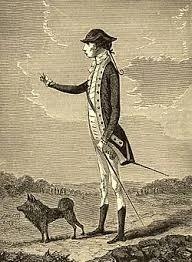Charles Wilson Peale Paints The Revolutionaries
Charles Wilson Peale was the portrait artist who gave us Founding faces to put on our money.
In addition to painting many of the Founder’s likenesses, Peale also brought the idea of the natural history museum to the attention of America.
Painting a Revolution
You may not recognize the name Charles Wilson Peale, but you have definitely seen his work.
Peale was a portrait painter during the American Revolution. He is one of the main reasons we know what the Founders looked like. Charles produced hundreds of portraits, many of which were of Continental Army Generals during and just after the Revolutionary War.
Although he was not the only portrait artist working in America at this time, he was certainly one of the most prolific.
Charles Wilson Peale
Born in Maryland, Charles Wilson Peale came from modest beginnings.
Originally apprenticed to a saddle maker, Peale opened his own shop in his late teens. This business quickly failed, as did attempts to succeed in several other artisan careers.
Fortunately, Charles began painting in his early 20’s and discovered he had a natural talent.
After studying with several local painters, friends began to recognize Peale’s talent and a collection was taken up to send him to Europe for further training.
Revolutionary
Peale studied in England with Benjamin West, one of the greatest ‘history painters,’ who was an American living in London.
After returning to the United States, Peale moved to Philadelphia and joined the Continental Army. This decision gave him the opportunity to paint several officers, bringing him credibility with the upper classes of society.
By 1779, Charles had risen in status and secured election to the Pennsylvania State Assembly. After two years, however, he refused to seek reelection and instead decided to paint full time.
Peale’s American Museum
By the time Thomas Jefferson assumed the Presidency, Charles opened Peale’s American Museum in Philadelphia.
This became the first natural history museums in the United States and included a wide variety of plant and animal species.
Of note, Peale’s Museum was the first to display mastodon bones. Not only were the extinct animal’s remains available to the public, but they were put together and displayed as if they were still inside the beast.
This was a novel idea at the time and we are accustomed to seeing this type of display at museums today thanks largely to Peale’s demonstration.
Fifteen years after Charles’ death, the Museum would go out of business. The person who purchased the largest amount of Peale’s curiosities was none other than P.T. Barnum. Portions of Peale’s museum would become part of the Greatest Show On Earth.
An extremely short list of Founders who Peale painted includes George Washington, John Laurens, Baron von Steuben, William Moultrie, Nathanael Greene, Benjamin Lincoln, Henry Knox, James Wilkinson and Thomas Jefferson.
To learn more about the fascinating world of portraiture during the American Revolution, I highly recommend picking up a copy of ‘Of Arms and Artists.’ This book looks at the lives of Peale and four of his contemporaries and views the Revolutionary War through their perspective. It has intriguing insights you do not usually find in books regarding the Founding Period. Purchase it through the Amazon affiliate link below and you can support this site without effecting the cost of the book.
Please consider subscribing to our email list for a new Founder every day.






